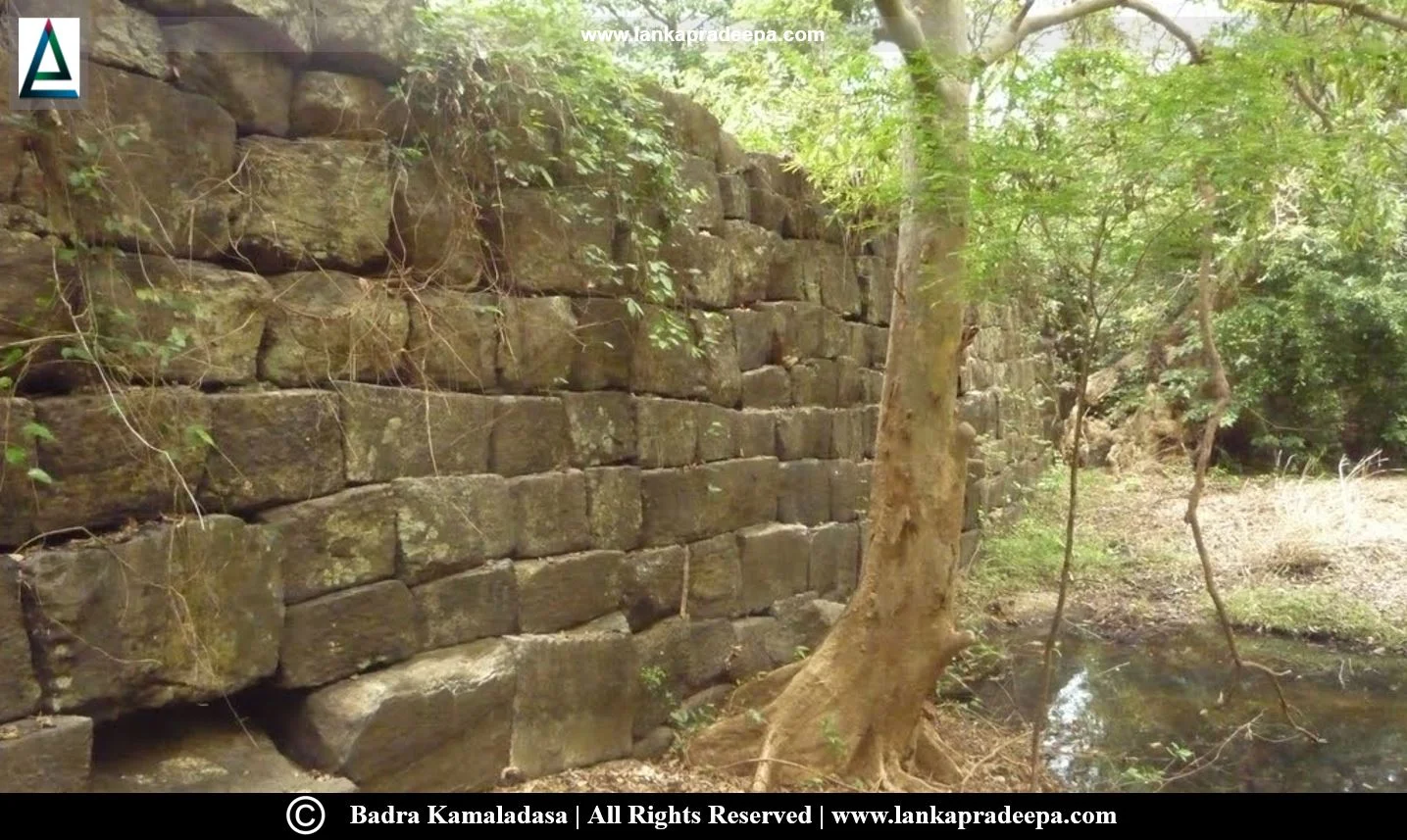
|
Down stream view of ancient Elahera anicut |
Elahera Amuna or Elahera Canal (Sinhala: පුරාණ ඇලහැර අමුණ) is an ancient anicut built across the Amban Ganga River in Polonnaruwa District, Sri Lanka.It diverts the flow of Amban Ganga River for direct irrigation development and to augment supply to Minneriya and Giritale tanks (Arumugam, 1969).
History
Elahera Amuna was known in ancient times as Alisara Canal and it has several references in history (Arumugam, 1969; Nicholas, 1963). The chronicle Mahavamsa states that the Alisara canal was in existence during the reign of King Valagamba (103, 89-77 B.C.) of Anuradhapura and that shares in it were assigned to Mucela Viharaya of Tiswadaman which was near the present Kaudulla Wewa (Mendis, 2007; Nicholas, 1963; Withanachchi, 2015). King Mahasen (276-303 A.D.) of Anuradhapura built Minneriya Wewa and Giritale Wewa reservoirs at the tail end of the Elahera canal and therefore, it is assumed that the Alisara Canal existed before the Minneriya Wewa and Kaudulla Wewa were built (Mendis, 2007; Nicholas, 1963). The canal was improved during the reign of King Aggabodhi II (604-614 A.D.) of Anuradhapura and its waters were supplied to the Giritale Wewa and to the Kantale Wewa through Minneriya Wewa (Arumugam, 1969; Withanachchi, 2015). The ancient Tilavatthuka canal (present Talavatura Oya) which filled Minneriya Wewa during the time of King Vijayabahu I (1055-1110 A.D.) of Polonnaruwa is believed to be a branch of Alisara canal (Nicholas, 1963). In the reign of King Parakramabahu I (1153-1186 A.D.) of Polonnaruwa, the canal was put into good commission (Arumugam, 1969; Mendis, 2007).
The Elahera canal was restored in modern times. The ruined canal was restored in 1887 and was re-commissioned in 1945 (Arumugam, 1969).
Pillar Inscription
A pillar inscription is found erected on the bund of the ancient Elahera anicut and it records that the irrigation canal on which the pillar stands is a work of King Parakramabahu I (1153-1186 A.D.). However, this pillar, most probably, was erected after the renovation of the anicut by the king.
The Canal
The canal extending from Amban Ganga head works to the bifurcation structure at Diyabeduma is 20.5 miles in length (Arumugam, 1969). The Kongeta Oya, Heerati Oya, Bakumane Ela, Kottapitiya Oya, Attanakadawela Oya, Hegolla Ela, and Radakegey Oya are several cross-drainage streams that fall into the canal (Arumugam, 1969; Mendis, 2007; Withanachchi, 2015).
Presently, the remains of this ancient canal is found at the same location where the new concrete anicut is built (Withanachchi, 2009). The remains of the ancient anicut about 62 m long are found on the right bank of the Amban Ganga River (Withanachchi, 2009). The new anicut which begins from the end of the ancient anicut is 122.5 meters long and it is assumed that the length of the ancient anicut was 185 m (Withanachchi, 2009).

|
Elahera Anicut and gates |
Related Posts
Read Also
References
Books, Journal Articles
1) Arumugam, S., 1969. Water resources of Ceylon: its utilisation and development. Water Resources Board. p.239.
2) Mendis, D., 2007, May. Ancient Water and soil conservation ecosystems of Sri Lanka. In Conference Paper Presentation In International History Seminar on Irrigation and Drainage. Tehran, Iran. pp.215-237.
3) Nicholas, C. W., 1963. Historical topography of ancient and medieval Ceylon. Journal of the Ceylon Branch of the Royal Asiatic Society, New Series (Vol VI). Special Number: Colombo. Royal Asiatic Society (Ceylon Branch). p.183.
4) Withanachchi, C., 2009. පුරාණ ඇළහැර අමුණ. Samodhana, The Journal of Faculty of Social Sciences and Humanities. pp.103-109.
5) Withanachchi, C.R., 2015. Ancient irrigation system of dry and intermediate zones as revealed from ancient canals. Rajarata University Journal 2015, 3. pp.4-16.
Location Map
Dynamic Google Map
Attribution
To Whom
LankaPradeepa.com extends its gratitude to Mrs Badra Kamaladasa (Former Director General of Irrigation) for providing the necessary photographs required for this article. All the photos are published here with the permission of the author.


